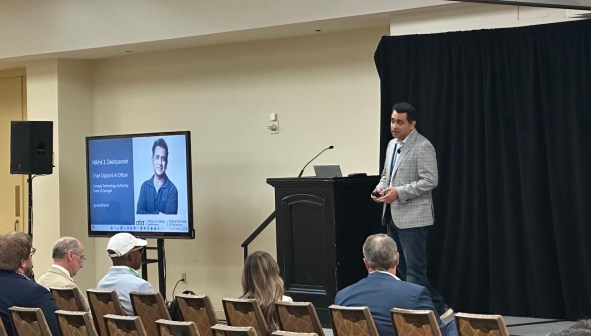Connecticut Gov. Lamont announces interagency data management system

Connecticut Gov. Ned Lamont on Monday used the first cabinet meeting of his administration to debut the pillars of his performance management system plan, promising easy-to-use digital services, improvements in internal data-sharing and collaboration between agencies.
Lamont, who recently marked his 100th day in office, said earlier this year that Connecticut would create the country’s first “all-digital government.”
The performance management system will align digital efforts between multiple agencies, the governor said in a press release.
“As a CEO, my teams used data to help build better, more efficient and more responsive experiences for our customers, and state government should be no different,” Lamont, a former cable television executive, said. “We’re bringing state government into the 21st century with our technology, but our processes and data collection must keep pace.”
The system will be housed in the state Office of Policy and Management, which will will work closely with Lamont’s office to run the new program. Lamont announced the appointment of David Wilkinson, an Obama administration policy adviser and former head of the Connecticut Office of Early Childhood, to the new role of chief performance officer. Wilkinson will report to Paul Mounds, whom Lamont hired in January as Connecticut’s first chief operating officer.
The performance management system will review often tedious government services like drivers’ license renewals, program enrollment and small-business incorporation to replace “redundant requests and standing in line” with digital services, the press release reads. The state will also link relevant data across agencies. Data from jails and emergency rooms will be grouped to assist vulnerable homeless populations, while health, childcare and transportation benefit programs will be aligned with workforce development initiatives.
“By focusing on results and reducing redundancy, we better honor the work of our dedicated state workforce and ultimately, our residents’ taxpayer dollars,” Mounds said.






